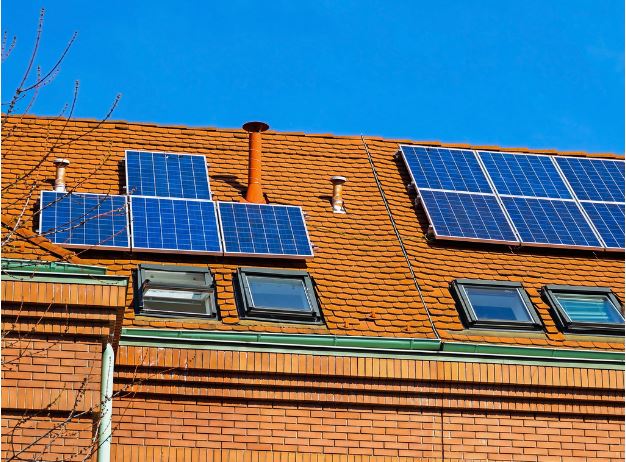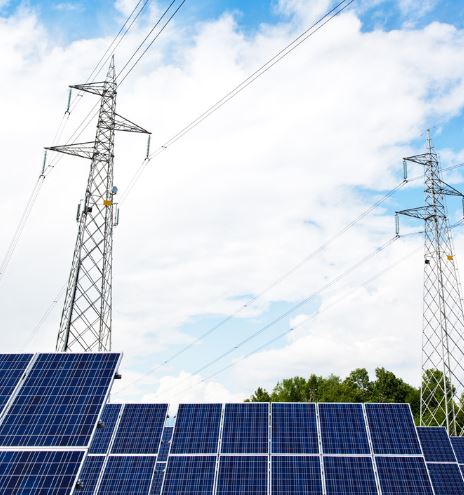Solar Rebate is an Excellent Tool to Help Reduce The Cost of Switching to Renewable Energy
The cost of solar energy has gone down in recent years, making it an increasingly attractive option for homeowners and businesses alike. However, the upfront cost of installing a solar system can be prohibitively expensive for some. One way to make going solar more affordable is through solar rebates. Solar rebates are incentives offered by governments or utility companies to encourage people to install a photovoltaic (PV) system on their property. These incentives can range from financial support to tax credits and other forms of monetary compensation. By taking advantage of these programs, homeowners and businesses can save money on the total cost of their PV installation and start generating clean energy sooner than they would have otherwise been able to do so. In this article, we’ll discuss the basics of solar rebates and how you can take advantage of them if you’re considering going solar.
Overview of Solar Rebates
Queensland solar rebates are a popular form of incentive for homeowners to install solar energy systems. With the rising costs of electricity and other forms of energy, many people are looking for ways to reduce their monthly bills. Solar rebates can help with this by providing financial incentives to those who choose to switch from traditional sources of power generation to clean, renewable solar energy.
Solar rebates come in many different forms and vary greatly depending on where you live. Generally speaking, they are usually offered by state or local governments as part of an effort to increase the use of alternative energy sources like solar power. Some states may also offer tax credits when you purchase or lease a solar panel system, allowing homeowners to save even more money on their utility bills in the long run.
The amount that is available through each rebate program will depend on various factors such as your location and how much electricity you’re using annually. In addition, some programs may require that you purchase specific brands or models in order for them to be eligible for the rebate money. It’s important that you research any program thoroughly before committing yourself so that you know what kind of savings are available and whether your particular system qualifies for it or not.
Types of Solar Rebates
Solar rebates are a great way to reduce the cost of installing a solar system for your home or business. With their help, you can save thousands of dollars on the upfront cost of your system and even more in the long run. There are several types of solar rebates available from federal, state, and local governments as well as private companies. Knowing what’s available to you is essential to making sure you get the best possible return on your investment.
- Federal Solar Rebate: The federal government offers a 30% tax credit for residential and commercial solar installations through 2021. This credit applies to both equipment costs and labor costs associated with the installation process, so it’s one of the most generous incentives out there.
- State Solar Rebate: In addition to the federal tax credit, many states offer additional incentives for going solar. These vary widely across state lines but typically involve some combination of grants, tax credits, loan programs, or other forms of assistance that can help make going solar more affordable for homeowners.
- Local Solar Rebate: Many counties and cities also provide financial assistance for those who want to go green with their energy sources.
Eligibility Requirements for Solar Rebates
Solar energy is becoming increasingly popular as an alternative form of energy production. With the rise in popularity has come a range of incentives, one of which being solar rebates. Solar rebates are a type of incentive offered by government agencies, utilities, and other organizations that help to reduce the cost associated with installing solar panels and other components of a home’s solar power system. Understanding eligibility requirements for these solar rebates can be beneficial when attempting to save money on your next solar installation project.
To qualify for most types of solar rebates, there are certain requirements that must be met in order to be eligible. While each rebate program may vary slightly, some general eligibility requirements tend to remain the same across programs. One such requirement is for property owners who wish to install their own equipment rather than have it installed professionally must show proof that they have obtained all necessary permits from their local government prior to installation beginning.
Additionally, many rebate programs require applicants to provide evidence that their proposed system meets applicable building codes and regulations set forth by state or local governments where the project is located.
Benefits of Solar Rebates
Solar power is a clean and renewable energy resource that has become increasingly popular in recent years. To encourage its uptake, many governments have implemented solar rebates to help offset the cost of purchasing and installing solar panels. Solar rebates can provide significant savings for homeowners and businesses alike, making solar energy more accessible than ever before.
The most common type of solar rebate is a one-time payment from the government or utility company to help cover the cost of a new installation. In some cases, these payments are available for systems that meet certain criteria such as size or efficiency rating. Rebates may also be offered for specific components such as batteries or inverters. These incentives can reduce the upfront cost of going solar by thousands of dollars, making it easier to make the switch to renewable energy sources.
In addition to one-time payments, many governments offer ongoing financial support through net metering programs or feed-in tariffs (FITs). These programs allow homeowners and businesses with grid-connected systems to sell excess electricity back into the grid at market rates — providing an additional source of income while promoting clean energy technologies at the same time.
How to Apply for a Solar Rebate
If you are looking to switch to solar energy, then you should consider applying for a solar rebate. Solar rebates are a great way to save money on the cost of installation and help make your transition to renewables easier. Here is a guide on how to apply for a solar rebate.
The first step in applying for a solar rebate is finding out what rebates are available in your area. Different states and municipalities have different programs, so it’s important to do some research before deciding which one is best for you. You can find this information by visiting the official websites of each state or municipality or by contacting them directly via phone or email.
Once you know which program works best for you, the next step is filling out an application form. There may be several forms depending on what type of rebate program you’re applying for, but they all generally require basic information such as your name, address and contact number; details about your planned system; proof of ownership (if applicable); and any other relevant documents required by the program. Make sure that all documents are filled out accurately so that there isn’t any delay in processing your application or rejection due to incomplete information.
Conclusion
In conclusion, the solar rebate is an excellent tool to help reduce the cost of switching to renewable energy. Not only does it provide a financial incentive for individuals and businesses to make the switch, but it also helps pave the way for a more sustainable future. The solar rebate is just one of many incentives available to those who are looking for ways to reduce their carbon footprint and save money on energy bills in the long run.





